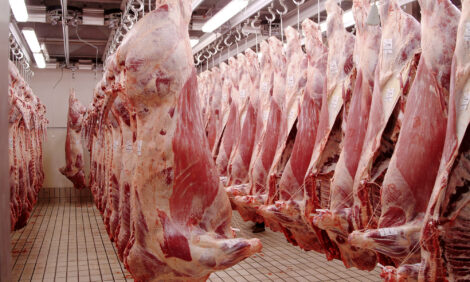



Multiple infections? It’s important to get to the root cause
Brian Payne, DVM, a technical service veterinarian for Zoetis, says infections will recur if the route cause is not addressed.Disease management can be challenging. You go through the barns and see pigs coughing, or maybe you see lethargic pigs with a poor appetite. You have a list of possible causes, but unless you get to the root cause, those symptoms are likely to recur, says Brian Payne, DVM, a technical service veterinarian for Zoetis.
“Far too often, when we see a clinical sign, we jump right to ‘it’s this disease,’ but it could be one of many things,” Payne told Pig Health Today. “Many different causes of disease are possible. If we seek out the root cause, we can then solve the problem.”
It’s a matter of looking at disease management on a deeper level, he explained. “If we just look at the problem on the surface and say it’s a [bacterium], we can put an antibiotic toward it and solve it for that individual pig… But where did that bacterium come from? Is there something that we can do in our management practices at the sow farm to prevent it?”
Perhaps there’s a way to prevent the problem in the first place, Payne said. There’s a well-known standardised process called DMAIC, which stands for define, measure, analyse, improve and control. Payne admits that while it’s an excellent process, it’s difficult to apply in multiple-farm situations. He wanted a process that could be tailored and root-cause analysis allows that flexibility.
“It’s a simplistic way to look at the root causes of problems, list them out, and then have a great conversation with the producer and other veterinarians,” Payne said.
Here’s an example
Let’s say a producer sees symptoms of what could be porcine reproductive and respiratory (PRRS) virus. The producer sees clinical signs of disease, and that’s the primary problem he wants to sort out.
“We look at options, including different diseases and different diagnoses,” Payne explained. “It could be flu, and PRRS could be involved, or it could be mycoplasma.
“Now we look at what processes are already in place to help prevent those diseases,” he continued. “Maybe it’s biosecurity that allowed PRRS to come in. Maybe the sow should have been vaccinated for flu.”
Maybe one of the root causes was a protocol that didn’t get implemented correctly. If that happened, “We go back one step further to determine why it didn’t,” Payne said.
“Maybe somebody didn’t order the product or the employee didn’t want to give the product, and if that was the case, why not? Maybe the instructions weren’t in the right language, or perhaps it was a new employee who wasn’t given correct instructions from the manager. That’s why determining the root cause is so important.
“Ultimately that cough in the finisher could have gone all the way back to a sow farm and a manager not explaining the vaccine protocol to a new employee,” Payne said.
Plan and communicate
The example shows how complicated finding the root cause can be, especially since co-infections are common in the pork industry. Communication is an integral part of the process, with input from owners, managers, veterinarians, nutritionists, staff members and others.
“It’s really sitting and planning with everyone involved on what the approach to the trouble-shooting is going to be,” Payne said. “Sometimes we go directly down the diagnostic route, and we may find co-infections. We can throw a lot of time and money at diagnostics, antibiotics or vaccines, but until we find the root cause, we’re going to continue to deal with a problem.”
Payne likes to use fish-bone diagrams in the root-cause process.
“Put your problem on the right-hand side, and draw lines off the problem to possible causes,” he said. “You force yourself to focus on every aspect of production, whether it’s health, management at the sow farm, genetics or environment. You fill out the sheet quickly and think about what role each factor could play in the problem. Once you actually sit down and write all of that out, you can step back and say, ‘Okay, I might have been biased - I thought it would be this problem, but it’s possible I need to think about all these other variables.”
Collaborative effort
Payne said the process is a collaboration between everyone who came in contact with the pigs or had a role in producing the pigs.
“It could be the maintenance person, if it’s a ventilation issue. It could be the manager, or it could be the employee,” Payne said. “The bigger the problem, the more people you should have in the room to help fix it,” he added.
The process works, Payne said. He recently worked with a farm where the pigs weren’t going to market fast enough. He sat down with the involved parties and went through the root-cause analysis. They looked at variables and considered these and other questions:
- Could it have been the boar they used?
- Did a change in the boar line decrease the number of days to market?
- Could it have been a disease issue?
- If so, could the disease have been prevented with vaccines?
- Should antibiotics have been applied?
“We were able to implement two different interventions, and we’re going to monitor those interventions to see if there’s a solution,” Payne said. “In the end, we believe that control of PRRS and ileitis, through vaccination, will help decrease the number of days to market.”
1,000-foot view
The root-cause process helps producers step back from a problem and look at all the possible causes, rather than gravitating toward the obvious causes. In many respects, it’s about slowing down and taking a longer view of the issue. On the other hand, determining the true root cause of a problem may ultimately speed the process by helping the producer spend less time and money in the long run.






